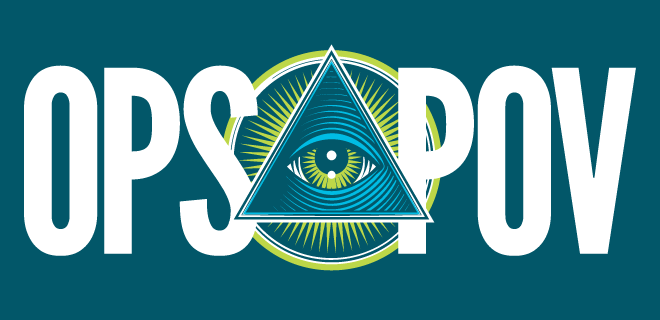
Tick tock, tick tock, tick. That’s the sound of the clock counting down on the third-party tracking cookie.
In response, the advertising industry is feverishly hunting for a viable privacy-forward replacement for identifying users and measuring campaigns.
Identity-resolution-powered universal IDs are being presented as an option for providing a secured, shared ID across publishers and throughout the supply chain, that can be leveraged for accurate targeting, frequency capping, and campaign measurement.
To that end, identity solution company ID5 recently announced the launch of Inside, a partnership program that creates an ecosystem of technology companies supporting ID5’s Universal ID as a cookieless alternative to the third-party cookie. The goal: to build a community of like-minded companies, who want to build a better and more competitive open web while enabling brands to reach their customers effectively.
Editorial Director Gavin Dunaway had a chat with ID5’s CEO, Mathieu Roche, about how to differentiate between identity solution providers, the benefits of joining ID5’s Inside community, as well as what it will take to rebuild probabilistic’s reputation.
Gavin Dunaway: Identity, identity, identity—publishers have been hearing that term nonstop the last few years. But how is ID5 different from other identity solutions and universal IDs in the market?
Mathieu Roche: There are two main differentiation factors when it comes to identity solution providers. The first one is neutrality. There is a group of companies that is uniquely focused on building an identification infrastructure for the industry to operate and another group of businesses that offer identity as a complimentary service to their core products and main revenue drivers.
Think about The Trade Desk, whose main product is their DSP, or Liveramp whose core business is their data onboarding platform. Offering an identity solution increases the value to their platforms. At the same time, it can jeopardize adoption as it’s unlikely that their competitors would use their identity services.
ID5 belongs to the first group. We don’t buy or sell media or data. Our only focus is to provide the best in class identity solution to power digital advertising. This focus frees us from any conflict of interest with clients and partners and allows us to build a strong and scalable identity business.
Another key differentiator is our unique approach to user identification. Unlike other identity solutions, that are focusing on authenticated users, we combine deterministic and probabilistic methods to increase the chances to provide publishers and brands with an ID. Authenticated users only count for a small percentage of the total addressable market. We think that as an identity provider we need to develop as many technical methods and capabilities as possible to identify consenting users, combining scale and accuracy to generate higher revenue opportunities.
GD: ID5’s monetization model also stands out among the ID suppliers. Could you explain how that works?
MR: Because identity is our core (and only) business, we have to monetize it. We believe that we are an infrastructure for technology platforms, like cloud computing or bandwidth. As such, we promote a flat fee model for our services, with volume buckets so that local data and technology vendors don’t pay as much as global ones. Publishers on the other hand get our services for free.
Licenses for platforms start at a few thousand dollars per month, making the service a commodity, but we are fine with that. Our services are designed to enable digital advertising on the open web to thrive. We want to make sure there are low barriers to adoption so that we can help the industry transition to a privacy-first, cookie-less world.
GD: So what’s the deal with the partnership program? What are the benefits of being a member, and why should ad tech and media companies that distribute the ID5 ID think about joining the club?
MR: ID5 Inside is an initiative that allows us to accelerate our efforts to build a more competitive and efficient Open Web. We created the program to support our technology partners and to increase the reach of ID5’s cookie-less advertising user ID. The goal is to help our partners to provide a stronger service to their clients by enabling them to identify their users better and to increase the value of their inventory and data.
We offer a variety of benefits to our Inside members, such as the chance to join our beta testing phases and co-marketing opportunities. We also provide identity training sessions for their teams and exclusive access to thought leadership content that they can leverage to educate and advise their clients.
GD: Probabilistic isn’t necessarily a dirty word, but people in the industry, namely advertisers, definitely turn up their noses at the term. What will it take to rebuild probabilistic’s reputation—or is that impossible?
MR: Probabilistic modeling has a bad reputation because it’s been used incorrectly in the past. Some people have sold algorithms and machine learning as a silver bullet and very often, sometimes because of lack of real science and a “black box” approach, advertisers have been disappointed. But in our case, algorithms are just a means to an end: to maximize the scale of user identification. Logins and email addresses are accurate means of cross-domain ID reconciliation, but they are not scalable enough.
You can only go so far with deterministic approaches. They may be good enough for use cases addressing known users like customer onboarding, but by definition, it doesn’t work for prospecting because you often don’t have an email address for your prospects. So we need to have an open-minded approach and use machine learning for what it’s good at, ie. provide scale.
We also need to be transparent on signals used to power the algorithms, expected results, and type of reconciliation methods underlining the IDs. ID5 provides all of that, and this why our approach has been so well received by the market.
